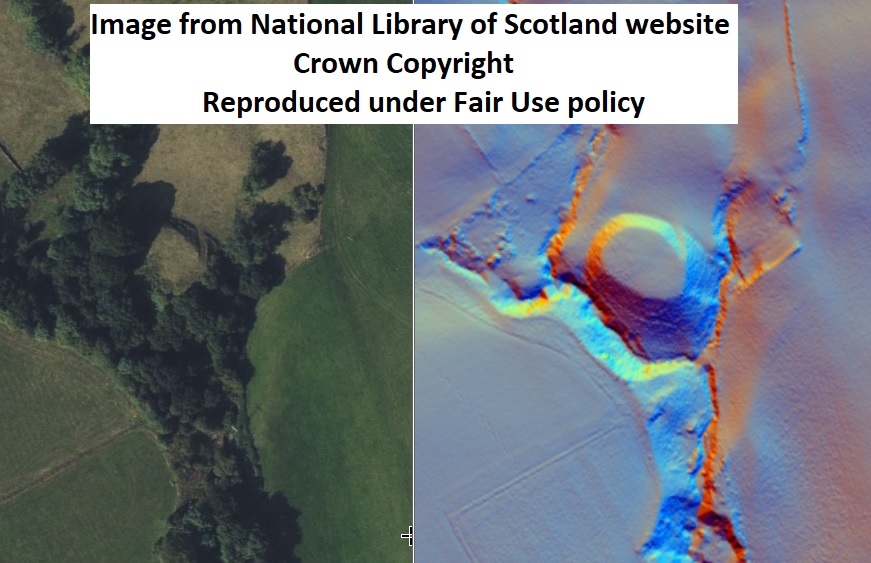Balcastle Motte

Balcastle Motte Details
Balcastle Motte, large motte with mostly natural ditch overlooking Kelvin valley
- Closest To: Kilsyth, Quenzieburn
- Access: S.O.A.C. Public Access
- Grid Reference: NS701781
Balcastle Motte is a substantial and well-defined ditched motte scarped from a natural mound overlooking the confluence of minor watercourses that flow into the River Kelvin. The ground to the southeast, south and southwest is steep natural slopes, to north-west less so but drops to a well-defined gully, and from north round to northeast there are suggestions of a ditch, although the principal defence here is the scarped slope of the motte. The summit is oval shaped, about 37 metres by 26, and even on the north-eastern side rises over 3.5 metres above the surrounding land.
There is no history associated with the motte, but it is undoubtedly the location of a locally important castle dating to the 12th and 13th centuries. The area was part of the earldom of Lennox, and in 1217 the earl granted lands in Kilsyth to Malcolm fitzDuncan, his brother-in-law, a grant that was confirmed in 1251 by the regents for King Alexander III. In this document it is made clear that Malcolm was the thane of Callendar, and his descendants took the designation “of Callendar”. Opposing Robert the Bruce, they were shown amnesty but through marriage to an heiress were replaced as lords of Kilsyth by the Livingston family in 1362.
Kilsyth separated from the Callendar estate in the 15th century, with Kilsyth passing to a younger son, William. Both William and his heir appear on records as “of Kilsith” – and “of Balcastel” indicating that the Balcastle lands were definitely associated with lordsghip of Kilsyth. Since the 16th century tower house of the Livingstons at Callendar was at the eastern end of the town, and Balcastle to the west, it seems possible that the motte was the location of the castle of the thanes and the Callendars – and may have been maintained into the 18th century as a ruined property near Quenzieburn was known as the “old place” in 1740.
Become a supporter of my work to access a more detailed history